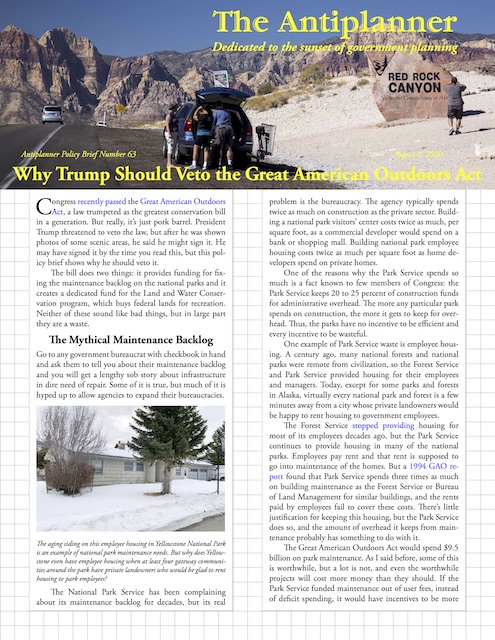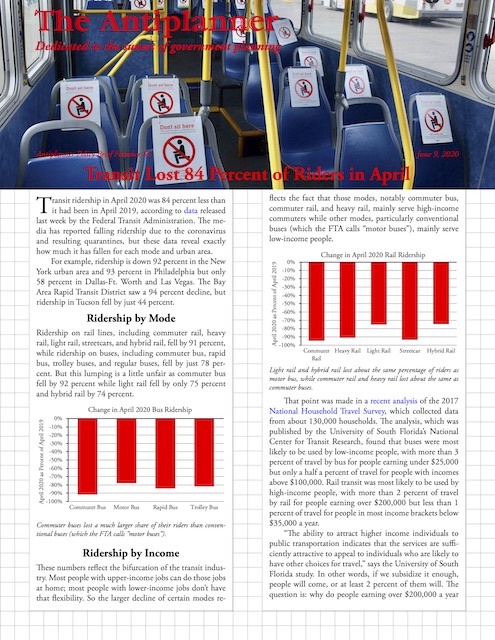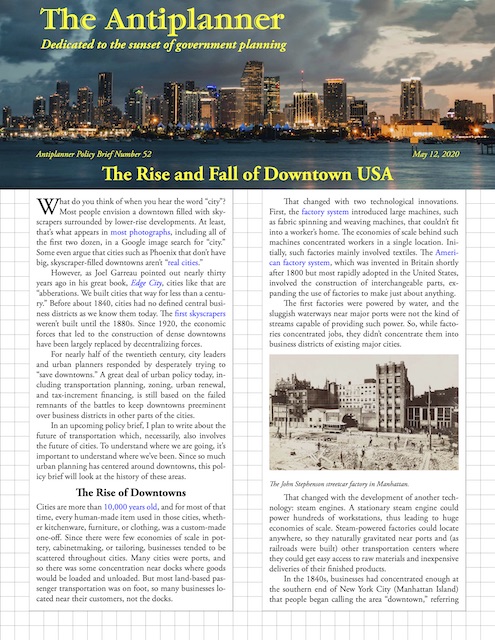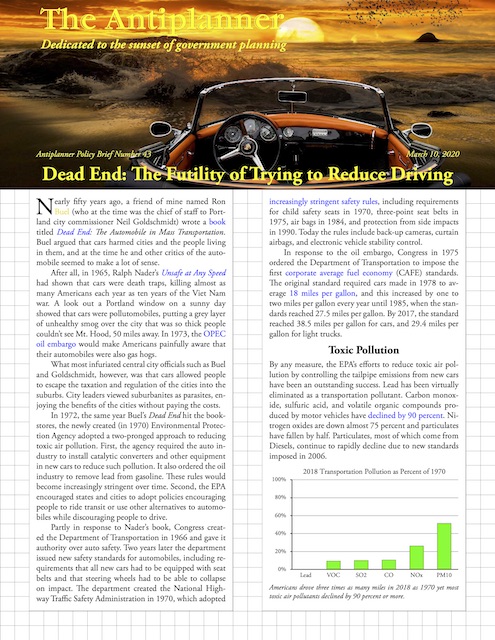Congress recently passed the Great American Outdoors Act, a law trumpeted as the greatest conservation bill in a generation. But really, it’s just pork barrel. President Trump threatened to veto the law, but after he was shown photos of some scenic areas, he said he might sign it. He may have signed it by the time you read this (Update: he did), but this policy brief shows why he should veto it.
 Click image to download a four-page PDF of this policy brief.
Click image to download a four-page PDF of this policy brief.
The bill does two things: it provides funding for fixing the maintenance backlog on the national parks and it creates a dedicated fund for the Land and Water Conservation program, which buys federal lands for recreation. Neither of these sound like bad things, but in large part they are a waste. Continue reading












